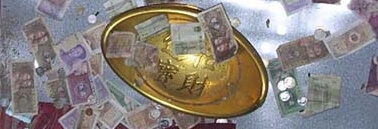Barbara Hoster
Translated by Sr. Jacqueline Mulberge SSpS
On January 22, 2023 the Year of the Rabbit began in China. The rabbit (tuzi 兔子) is the fourth animal in the Chinese zodiac signs. This year, which according to the traditional counting is guimao 癸卯, it is connected with the element water.
Since the beginning of the Zhou era (11th century BC) jade animal figures were given as supplementary gifts in tombs but they were also jewellery pendants or utility items favoured by the upper class – and among them we find many figures of rabbits.
According to an ancient mythological idea, the rabbit lived on the moon, which led to its epithet “Moon Rabbit” (yuetu 月兔) or also “Jade Rabbit” (yutu 玉兔), because of its white fur. How the rabbit got there can be traced back to a Buddhist legend from India: Buddha, in the guise of a hungry and lost pilgrim, begged the animals of the forest for help. Whereas the jackal and the otter brought their own booty to the pretend pilgrim, the rabbit offered itself as food and threw itself for him into the fire. Buddha rewarded the rabbit’s self-sacrifice by placing him on the moon as a shining example. Typical representations dating back to Chinese Daoism show the Moon Rabbit standing on his hind legs under a cinnamon tree in the courtyard of the Moon Palace, where he uses a mortar and pestle to make the elixir of immortality from the bark of the cinnamon tree. That is why the rabbit is also a symbol of long life. On the moon he joins the other inhabitant of this celestial body, the moon goddess Chang’e 嫦娥 (“Eternally Exalted”), wife of the mythical archer Hou Yi 后羿. She had stolen the pill of immortality from her husband and therefore fled to the moon, where as a punishment she was changed into a three-legged toad. The cosmological idea of toad and rabbit as inhabitants of the moon is very old. The two can already be seen on the famous “soul banner” of the Western Han period (207–9 BC) on a crescent moon – the banner was found in the tombs of Mawangdui in Changsha and represents the ascent of a deceased person to the immortals.
[more...]


